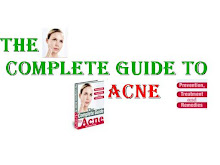Acne vulgaris is the most common acne that infects majority of the people mostly teenagers. But there are several other severe forms of acne. These severe forms of acne are not only painful but also cause a great deal of stress, embarrassment and psychological effects on the sufferer. Moreover, with quick diagnosis by dermatologist these acne types can be treated successfully in a short time. The different severe forms of acne are as follows:
1) Acne rosacea:
Acne rosacea is a severe and chronic skin disorder that affects parts of the face including cheeks, nose, forehead and chin. It is mostly seen to affect people above 30 years of age. It look similar to Acne vulgaris. The main symptoms are redness along with bumps, pimples and skin blemishes. It causes swelling of the nose and growth of excess tissue. If such a symptom arises then it is very necessary to consult a dermatologist as urgent as possible.
2) Acne conglobata:
Acne conglobata is the most severe form of acne vulgaris and is more common in males. It occurs on the face, neck, chest, upper arms and back. It affects people above the age of 20 years. It is characterized by deep and large highly inflamed lesions which are interconnected along with widespread blackheads. It causes severe damage to the skin tissue along with scarring. It is necessary to consult a dermatologist as soon as possible and start the treatment.
3) Acne fulminans:
Acne fulminans is rare and most severe form of Acne conglobata affecting young man. It appears suddenly with nodulocystic and inflamed acne characterized by fever and joint pain. Extreme, disfiguring scarring is another common symptom. Acne fulminans does not responds to antibiotics and hence oral steroids are prescribed to the sufferer.
4) Gram Negative Folliculitis:
Gram negative folliculitis is an infection of hair follicles that is caused by Gram negative bacteria like Escherischia coli, Pseudomonas aeruginosa etc when the patients suffering from severe acne are treated with excess of tetracycline antibiotics. The symptom is characterized by extensive pus filled pustules on the skin. It can be treated with isotretinoin.

No comments:
Post a Comment